You will definitely see more deer if you spend longer deep in the bush where they live, and especially if you can spend the night out with them. I prefer to ‘get away from it all’ and camp out far from anyone else rather than eg hunting the fringes of private land where I admit there are lots of deer (and people too – I just hate that sound of a gun cocking off in the scrub close by. I definitely do not like being stalked!)
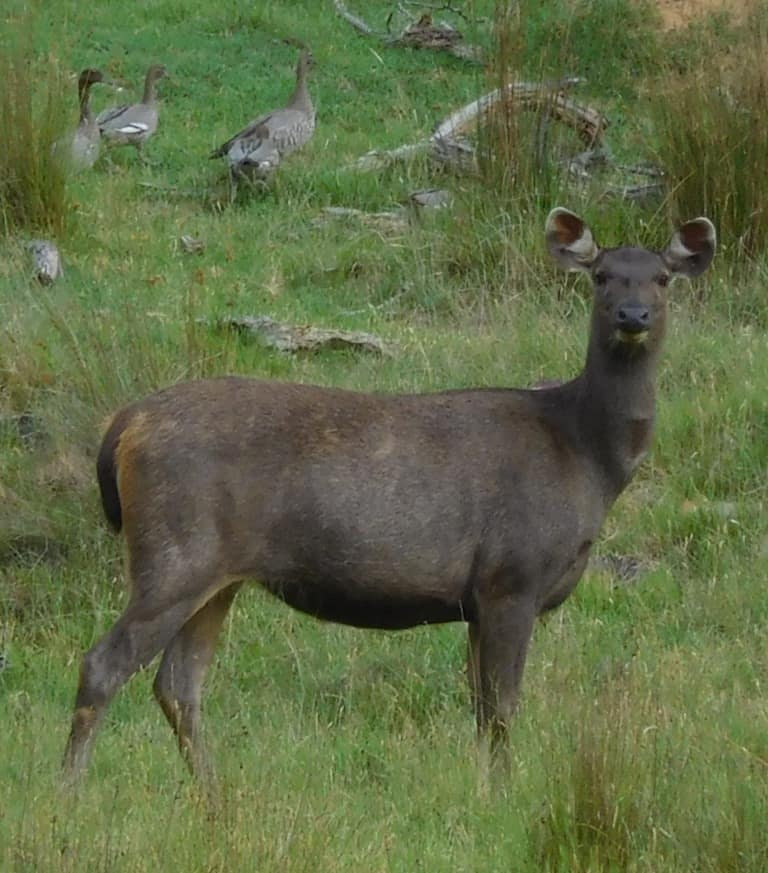
I find that deer behaviour changes dramatically once you get half a day’s walk away from vehicle access. They are just a lot less ‘spooky’. Sometimes you can walk right up to them. Of course I admit hunting days away from your car makes getting (all) the meat out a much harder chore. It usually keeps well enough though for a couple of nights in a deep pool in a winter stream, and I find I usually walk faster on the way home too! Mind you these days I am often just as happy to be there without shooting anything – a few fish or crays from the river and just enjoying the tranquility has me quite content.
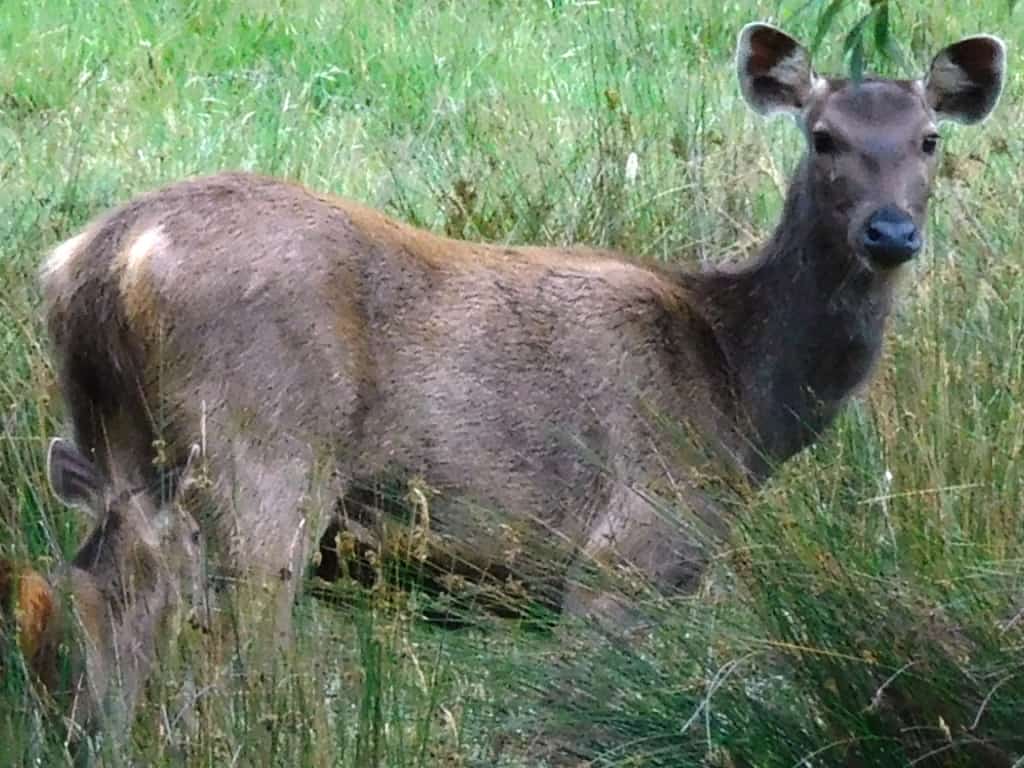
Here are some suggestions for an ultralight deer hunter’s ‘Gear List’. Even if you are not heading to some remote spot it is worthwhile reducing your overall hunting pack weight as it will mean you can walk further (and especially more quietly – if you have not switched out those noisy heavy boots for a lighter, quieter pair of sneakers, you should do so now. These ones are even lighter). The further you walk, and the harder you look, listen and smell, the more deer you will encounter. Lighter shoes may take you twice as far and with half the noise. See Also: Hammock Hunting Till Dark
Pack: First of all, as I suggested here (Best Hunting Daypack & Hunting Daypack), you need to reduce your pack weight. The ‘MLD Burn’ is an excellent choice for a rugged hunting overnight or day pack at 370 grams. You might also consider Zpacks’ 38 litre Nero at 309 grams: though the fabric is a little lighter. It may nonetheless be just as strong – or even stronger. It has the advantage that it is adjustable for smaller (or larger) folk.

What would I put in it for an overnight stop?
NB I am now using this Superlight Hunting pack 193 grams.
Tent: Of course I would have my ‘Pocket Poncho Tent’ at 185 grams – and you may be lucky to have one too if I can manage to organize manufacturing them in Asia somewhere (soon?). My new 7 x 7 Multi Tarp (which I am sewing at the moment) at much less than 200 grams but which makes a shelter, a hammock tarp and a poncho may be even better. Pattern available soon.
Otherwise you should look around for something around 250 grams such as Gossamer Gear’s Twinn Tarp: NB: As an alternative, I have also recommended a hammock/tarp/pad combo here: Hammock Hunting Till Dark See also: A Hummingbird in the Hand A hammock/tarp combo allows you two different sleep systems: on the ground or in the trees.
NB My new tent/hammock tarp The Grey Flyer starts at 310 grams. I will get it down to 200 grams in the .77 oz/yd2 fabric. I am currently (Sept 2022) making one in the Membrane fabric which will be 240 grams.
Below the Pocket Poncho Tent at 185 grams.
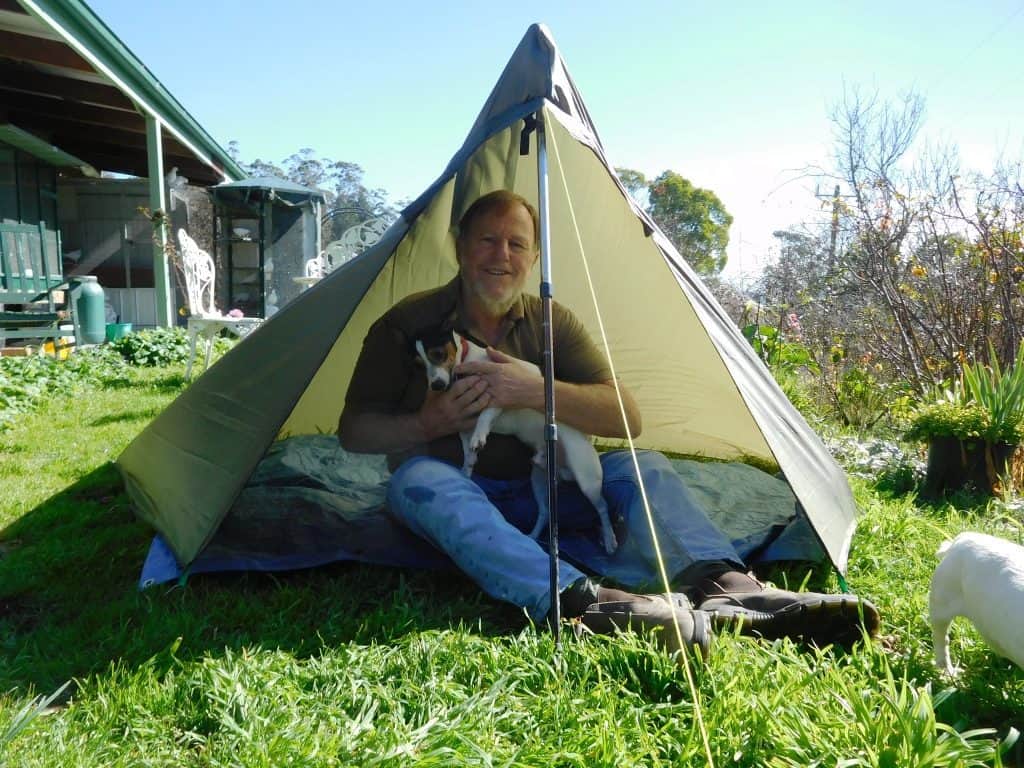
If you prefer a tent, you could either make your own as I do, perhaps starting with this: Poly Tent for approx $10 (try a search for ‘Tent’ above) eg the Forester Tent (New Tyvek Forester Tent), or there are quite a few 500 gram (ish) tents now available, such as this one: 599 Gram Tents or Six Moon Designs eg Gatewood Cape at 340 grams, or Mountain Laurel Designs eg: Trailstar from 340 grams, or Zpacks eg Solplex 439 grams (this one includes floor/bug net), etc.
Pegs/Guys: Of course you will need some pegs (Tent Stakes and Tricks ) and guys (Perfect Guyline), say about 70-80 grams worth..
Groundsheet: I might use a space blanket as a ground sheet if I thought I needed one; I usually carry one anyway for safety/first aid (50 grams) – but I will soon have my Bathtub Groundsheet Chair (Bathtub Groundsheet Chairdsheet) when I get around to making it – at approx 85 grams (I estimate). A little comfort never went astray!
There are lots of ultralight options including polycryo which would work out at 23 grams. If you yearn for something a little tougher, I guess you could opt for a piece of eg Membrane silpoly which will still likely be under 50 grams depending on size (eg 2′ X 7′ = 42 grams). You can drape the edges over some fallen timber to create a bathtub floor effect if it is raining heavily and you anticipate flooding. It does not need to be hemmed but you can like this: Simple Ultralight Groundsheet at 95 grams.
Mat: You could use a 4’ Thermarest Neoair X-Lite (ie Small ) as a mat, and put your feet on your pack for a bit of insulation – 230 grams. For more comfort I usually opt for the ‘Womens’ size at 340 grams and 5’6″ .
The Big Agnes AXL Air: (300 grams for the 6’ long by 3” thick model which I would shorten by about 6” – 270 grams – as I am somewhat vertically challenged! Anyway I usually sleep on my side curled up a bit so I can fit comfortably on a 5′ mat). NB Found it too cold for winter use but the Exped HL Winter M is brilliant.
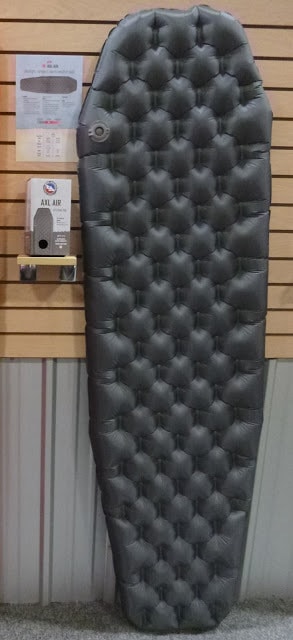
This pad is not suitable for cold weather.For really cold weather see my post: Cold Season Pads
Sleeping Bag: My favourite sleeping bag is the Montbell UL Super Spiral Down Hugger #3 now at 624 grams though my own older model is lighter (<600). I would also carry some other Montbell clothes (See ‘Clothes’ below) for warmth such as the ‘Superior Down’ coat (200 grams) and vest (150 grams). If it is a particularly cold night I put the coat on my upper body and the vest on my lower. This reduces the temperature of the down bag from -1c to approx -10C but at no weight penalty. (NB I have added down to my bag to make it warmer for really cold nights. This was easy).
Zpacks makes an even lighter model (which Della has). Her 5’9″ bag warm to -7C weighs 499 grams inc compression sack: New Zpacks Sleeping Bag
Pillow: You should try this: Exped Ultralight Pillow at 45 grams or this: DIY Super Ultralight Pillow . Say 10 grams.
Of course Bonnie Prince Charlie (somewhat effeminately, the tough hillmen opined who used no pillow) used just a stone as a pillow when he was camping out in the snow in a Scottish winter in just his kilt and cloak. Those Scots are/were tough!
Dry Socks & Shoes: If you suffer from cold feet, you might consider a pair of Goosefeet Gear down sox – 50 grams (and of course I carry my home-made Dyneema slippers for a dry change of shoes: Sub One Ounce Per Pair Camp Shoes – 24 grams.
Another option is a pair of Sealskin Socks (mine weigh approx 80 grams but there may now be a lighter model) which enable you to wear wet shoes – or just carry dry socks and maybe some Crocs.
Cookset: I outlined my minimum cookset here: Ultralight Windscreen 60 grams. A slightly larger model here: Cookset Woes. My DIY 20 Gram Roll Up Stove beats that hands down. Of course you will need a 9 gram (12 long) spoon to go with that: and maybe some Esbits – I have improved on these two ideas in Mastery of Fire and 76 Gram Cookset.

Rainwear: Try to keep the weight of this down. If you weigh your raincoat don’t be surprised if it is over 500 grams. Choice here is a bit more difficult for hunting where significant abrasion might be a factor. (Much moreso if you are a hound hunter rather than a stalker). Raincoats range down to around 150 grams or less, (Luke’s Ultralight/Zpacks) – again see Montbell’s range:Ultralight Rain Gear
If you are careful with a lightweight coat it will serve you well. If you are trying to be very quiet it is unlikely you will tear your raincoat; besides it isn’t always raining.
Soon (I hope) you will be able to take advantage of my Pocket Poncho tent which will keep you dry both during the day and at night (with a minimum weight of about 185 grams.
Raincoat: Lightest and best value for money are probably Montbell’s offerings, eg the Versalite at 189 grams.
The cheapest fully breathable waterproof jacket (not very durable – but very light) is the DriDucks by Frogg Toggs. I personally like an ‘Event’ Raincoat; I have two which have kept me very dry in trying conditions. I also like Zpack’s new raincoat.
Hat: If you really want to have a warm head of a night, I have one of Ray Jardine’s ‘Bomber’ hats my wife Della made for me years ago at 30 grams. I doubt she will make one for you. A number of people offer down balaclavas, eg: Zacks Goose Hood at 37 grams or Down Balaclava.
I also use a ‘Buff’ to keep my neck and particularly my nose warm (37.5 grams) This is the very acme of luxury! During the day I have my Icebreaker wool cap (now alas, deleted): Deer Hunterss Cap fortunately I have a number of them!
Gloves: If it is really freezing, I have the MLD Rain Mittens Ultralight Mitts and Gaiters 42 grams. (I also have their ultralight gaiters – I find they work wonderfully to keep rubbish out of your shoes). The mittens work really well on very cold wet days when otherwise your hands would freeze – of course they do interfere just a bit with your trigger finger!
Under the mitts I can wear a pair of ultralight polypropylene or wool gloves, such as Icebreaker’s Oasis Glove Liners at 24 grams.
Dry Clothes: Dry clothes (and a raincoat) are options if it is likely to rain. (Otherwise you might just carry a disposable poncho and risk having to dry your clothes out with your body heat). Keep these as light as possible. Again Montbell are hard to beat with their windpants 53/75 grams and windshirts 55 grams , or you could just take some Icebreaker of Kathmandu wool thermals as your dry change – and for extra night insulation.
Clothes: Start from the skin out. Weigh your clothes. Most of those proprietary ‘hunting’ clothes and shoes are heavy as lead, particularly when wet. I always wear wool socks. The lightweight Holeproof Heroes (now rebadged as Bonds) in summer, and Explorers in winter have been long-term stand-bys for me, durable and cheap. Wigwam are, arguably better but much more expensive.
Then I would wear lightweight trousers such as the Columbia Silver Ridge. (I have yet to find anything as light and as durable for their weight). To counter the smelliness which can develop in nylon clothing I recommend wearing Icebreaker wool knickers underneath:
Since you will normally be hunting in the winter months wear a long sleeve wool shirt such as the Tomar from Kathmandu or the Departure 2 from Icebreaker. They are tough enough to withstand a bit of bush-bashing. In the summer months I wear a knitted wool top such as this: http://www.kathmandu.com.au/mens/clothing/tops/ometo-men-s-polo-shirt-v2.html but they are not so durable (or available so you may have to go with Icebreaker’s offerings which though excellent will be dearer).
Anyway always wool if you don’t want to stink – and remember if you stink the deer will smell you too! For layering, I also recommend wool: an Icebreaker/Glowing Sky/Kathmandu tee, long top and/or long-johns. I also wear an Icebreaker wool cap: which unfortunately for you may no longer be available – but check their factory outlets. I was in Collingwood recently and they still had some.
NB: These folk now have wool camo hunting clothes: First Lite just as Icebreaker used to have: Camo Wool for Deer Hunting
For insulated layers in really cold weather and of a night, I choose Montbell again. Their Thermawrap series are one of the lightest synthetic insulated garments. You might chose a vest in this material for an extra layer if needed in the daytime (when it might get wet) and a Montbell down coat of a night. I own their Superior Down coat (and vest, as well as the Thermawrap vest). I see they now have a 1000 fill power down (Plasma) jacket – but it is much more expensive. Too expensive for me.
Larry Adler is the Australian supplier: There are some items which they do not stock, but they might get them in…Ask them. If it is still unavailable it is possible to order it from the US (eg using Shipito)
Shoes: I suggest some ultralight shoes such as the Topos I reviewed here: Topo Terradventure or some Keens: Keen Shoes If you have wide feet like me. Try these Wide Shoes if your feet are even wider – I have found them good. There are other lightweight options such as Inov-8s if you have narrower feet.
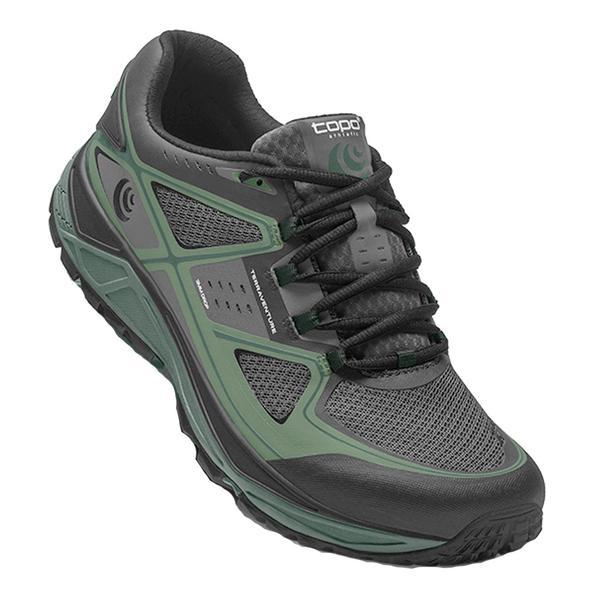
Guns and Knives: I have posted about the lightest effective knife I have found (at 16 grams ea) here: Ultralight Blades for the Ultralight Hunter
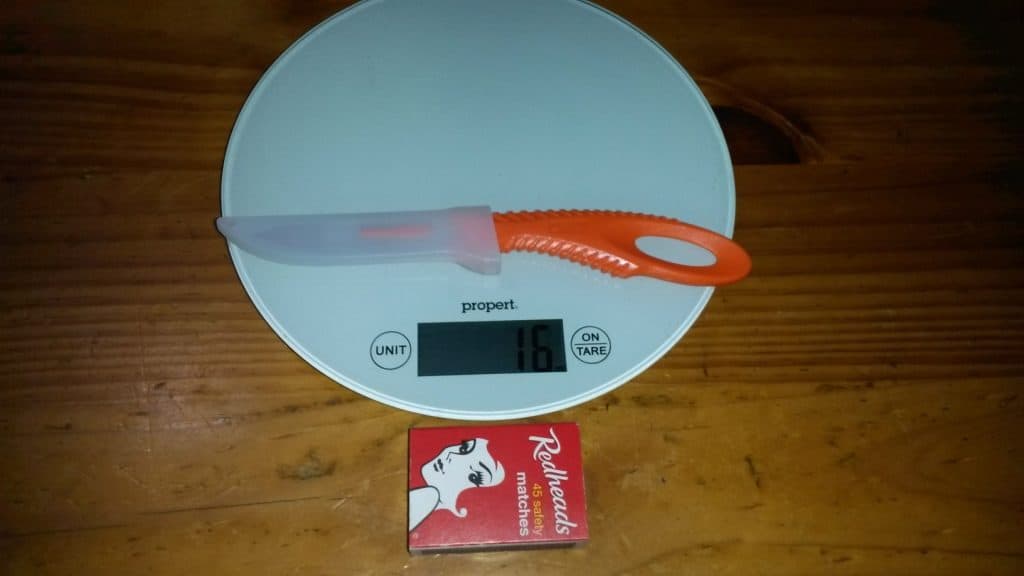
Another heavier choice which might interest you (if you don’t fancy sharpening your knife) is here: Never Have to Sharpen Your Knife Again. I do like the Olfa Knife too (and it’s cheap).
If you do like to sharpen it, you might still want an ultralight sharpener: Ultralight Knofe Sharpener
You probably know I use a lever action .308 in take-down (so I can put it in my canoe bag or pack). You probably also know that the short action round makes for a lighter gun than the long action. I realise a lever action (and a take-down) both outweigh a standard bolt action, but I have my reasons – always carry an empty gun but be able to get a shot or two off fast.
Also, sambar are not really ‘big game’ animal. A .308 is quite adequate to stop them. If you want something ‘bigger’ try the WSM. Obviously iron sights (which I chose for ethical reasons) are much lighter too than telescopic sights.
There are people who specialise in ‘sporterising’ rifles to make them lighter (as everyone, including me), used to do with their old .303s! You could probably get your deer rifle down to perhaps 2.5kg or less with carbon stock and barrel, so still it is clearly the single heaviest thing you are carrying. Kimber make one of the lightest production rifles.
Electronics:
Torch: I used a AAA torch and was outrageous and often carried two of them (one for use as a lantern and one as a headlamp), but they only weigh at most 14-16 grams each (inc some string a micro cord lock and a couple of O-rings to turn them into a head torch): Lighter Brighter Better & 11 Gram Rechargeable Torch Clearly you would also need a few spare batteries at 10 grams each. I have gone over compeltely to these wonderful 700 lumen 15 gram rechargeables Nano Torches You may need an Ultralight Power Bank and Ultralight Cables
Phone: I take my Samsung Galaxy S4 Mini phone with me (at 120 grams inc battery) as (in Flight Mode) I can get nearly a week’s use out of it just every now and then using the mapping App, or reading a book, listening to music, etc. It also makes a good back-up camera. I now have a new phone which fits in my fob.
Camera: The camera I am using at the moment is this one, the Nikon s7000: New Camera& Camera Glassing at 160 grams inc battery/card (and it has taken some good shots – I’m sure you’ll agree!), but I know there are now models with better optics (eg 30-40 X zoom – Della has one and it’s a beauty: Della’s New Camera) and programming which are not a lot heavier, and which will secure some better long-distance/poor light etc shots. The Sony WX500 at 209 grams is a case in point. I just received one: Ultralight Camera. After much experimentation though I have bought up several used S7000s as I doubt they will ever be bettered.
PLB: I think you should carry some safety equipment (apart from your First Aid kit). If you are on a budget the Spot Messenger Get Lost Get Found at 114 grams is the way to go. If you are a bit better heeled then you might go for an Inreach The Poor Man’s Satellite Phone at 191 grams or even an Iridium Extreme Sat Phone at 247 grams: The Not So Poor Man’s Satellite PhoneThe lightest Sat Messenger/PLB/Epirb is now 3 ounces: A 3 Ounce Satellite Messenger. I am currently using Garmin Mini. Don’t leave home without one!
Saw: You will need something perhaps to get those antlers off (or you may choose to carry out the whole head and cape if you are very strong). You can make an ultralight bow saw (eg using a 15″ bone saw blade) as discussed here: Ultralight Saws. The lightest thing I know for this purpose is a length of embryo wire (available from veterinarians).
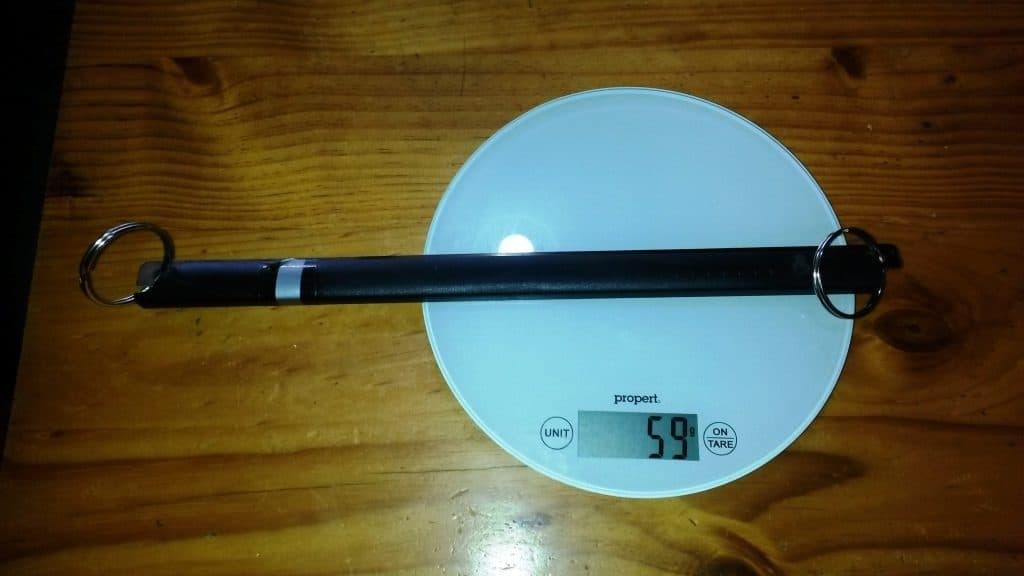
First Aid: You certainly should carry a small kit. It is a matter of personal taste what you carry really. I carried an elastic bandage and a sling (for example) for over twenty years and never needed them – but when I did (Della dislocated her shoulder: http://www.theultralighthiker.com/10-days-in-fiordland/) I needed them in the worst way! I carry a number of drugs: Panadeine Forte, some anti-inflammatories, anti-nausea, Imodium, antihistamine, band-aids, bandages, blister pads… I would allow at least 100 grams for this vital component.
Essentials Tally (Gun and Ammo + worn clothing plus):
Pack:370 grams
Tent: 340 grams
Pegs/Guys: 80 grams
Groundsheet: 50 grams
Mat: 270 grams
Sleeping Bag 499-624 grams
Pillow: 45 grams
Sealskin Socks: 80 grams
Cookset: 69 grams
Dry top/bottom: 108 grams
Insulated vest & coat: 156 + 208
Knife: 32 grams
Saw: 20 grams
Phone: 120 grams
PLB: 114 grams
Torch and batteries: 56 grams
First Aid, say 100 grams
Cumulative Total:2647 grams
Add Food: approx 500 grams/ day.
I’m sure you can see that my total is probably less than the weight of your day pack (empty).
PS: I have usually gone for a higher number here than I actually carry (eg so that it is something you can currently readily buy), so that for example my tent weighs 185 grams, my current pack 230 grams, my dry shoes 13 grams, pillow 10 grams, groundsheet 23 grams …so, I would probably shave 300+ grams off this total, say to a max of 2.3kg! I have probably shaved nearly half a kilogram off this since I wrote this post!
Spot and I stop for lunch by the river. That small pack has everything I need for over a week’s hunting – including Spot’s bed and rations, and he is a bigger eater than I am! And you can see I had brought my machete along in case I needed to do some clearing, and my hiking poles in case my knees or back gave trouble – which fortunately they did not.
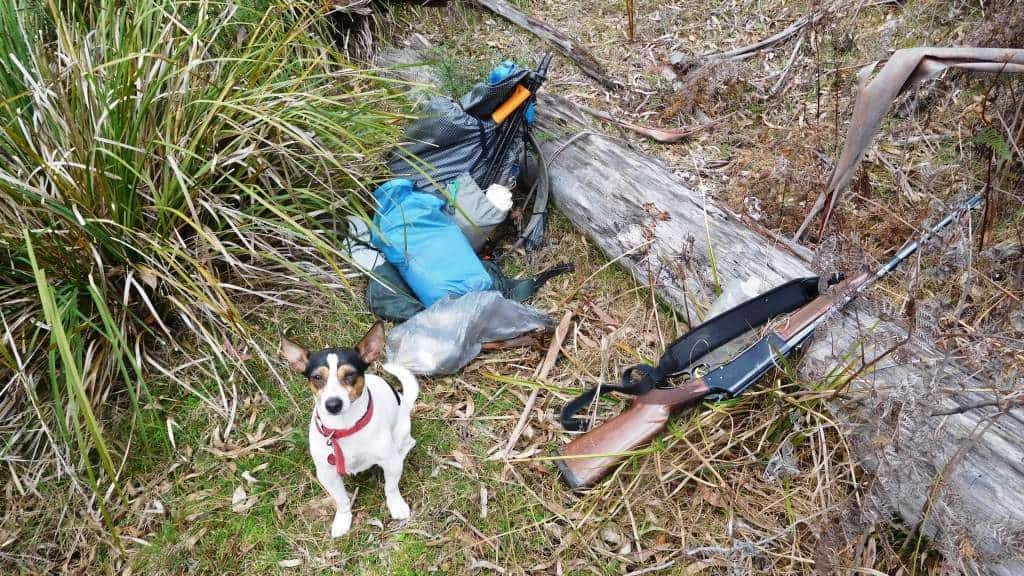
If you would like to get an encyclopedic idea of my multi-day hiking list, you might find this interesting: http://www.theultralighthiker.com/a-gorilla-in-the-hand/
First Published Oct 28, 2017
See Also:
http://www.theultralighthiker.com/the-deer-hunters-apprentice-1/
http://www.theultralighthiker.com/sambar-stalking-101/
http://www.theultralighthiker.com/the-lure-of-the-moose/
Other hammock related posts:
http://www.theultralighthiker.com/a-hummingbird-in-the-hand/
http://www.theultralighthiker.com/adjustable-hammock-ridgeline/
http://www.theultralighthiker.com/continuous-loop-another-great-hammock-idea/
http://www.theultralighthiker.com/whoopie-slings-what-a-great-idea/
http://www.theultralighthiker.com/side-insulation/
http://www.theultralighthiker.com/hammock-pad-extender/
http://www.theultralighthiker.com/diy-netless-hammock/
http://www.theultralighthiker.com/klymit-hammock-pad/
http://www.theultralighthiker.com/make-your-own-tarp-or-hammock/
http://www.theultralighthiker.com/hammock-camping-double-bunking/
http://www.theultralighthiker.com/hammock-hunting-till-dark/
http://www.theultralighthiker.com/all-in-one-hammock-tent-poncho-backpack-at-1-2-kg/
http://www.theultralighthiker.com/laybag/
http://www.theultralighthiker.com/all-you-ever-need-to-know-about-tarps/
http://www.theultralighthiker.com/tier-gear-catenary-cut-hex-tarp/
http://www.theultralighthiker.com/900th-post/
http://www.theultralighthiker.com/sleeping-pad-reinvented-big-agnes-q-core-slx/
http://www.theultralighthiker.com/modifyingshortening-hiking-mats/
http://www.theultralighthiker.com/catenary-cut-tarp/
http://www.theultralighthiker.com/thermarest-speedvalve/
http://www.theultralighthiker.com/hole-less-ponchoshelter/
http://www.theultralighthiker.com/hammocks/
http://www.theultralighthiker.com/hammock-camping/
http://www.theultralighthiker.com/the-ultralight-deer-hunter/
http://www.theultralighthiker.com/hunting-in-fiordland/


what about something to carry the meat ? any suggestions about some light game bags ?
I usually just have a few plastic handle ties from Woolworths. A roll of them costs about $2 and they weigh only 1-2 grams each. Find them near the garbage bags. They have worked fine for me for forty years. Half a dozen is usually enough. Cheers, Steve.
you have left your sleeping bag out of your tally
Well spotted Scott. I have amended it now. Still under 2.3 kg of gear for an overnight hunt. You could probably manage that too!